|
It may be that plans for Victoria Park were being hatched before 1836, but it was in that year that they became public for the first time. Advertisements in the Manchester press indicated that plans were afoot to create a 180 acre park in an area that fell mostly within the township of Rusholme. The plan called for the creation of a walled ornamental park with plots for mansions and villas. The park was to be named after the heir apparent at the time. Eight prominent men founded a company to purchase the land and that company was consolidated a year later by an Act of Parliament. The Victoria Park Act recieved Royal Assent in May of 1837. 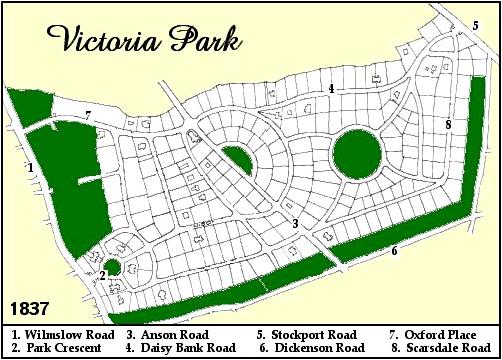
One of the first acts of the Victoria Park company was to direct Richard Lane, an architect and one of the company founders, to contract for the building of a park wall and entrance lodges. Construction on the lodges began in August of 1836. The company then set about the task of constructing roads and crescents and building private homes. Buildings used for trade were not allowed within the park. From the beginning construction within the park was "tied" by an agreement that no dwelling would be constructed with a rental value under £50. It was important to those who moved into the park to protect their investments by ensuring that property values were not diminished by allowing free access to the park or allowing the construction of inferior homes. The original Victoria Park Company was founded on the basis of a tontin. A tontin is, in fact, a form of gambling and in the case of the Victoria Park tontin, the plan was that eventually all the shares would fall into the hands of 50 surviving share-holders and would at that point be shared among them. In fact, this never happened, because soon after the formation of the company a trade depression plunged the company into a state of instability that resulted in it "fading away" when bancruptcy threatened. The company may have "faded away", but its departure did not exactly go unnoticed. In fact, at least one legal action was taken against the directors, alleging that they conspired to inflate property values for their own profit. However, the legal action proved fruitless and those who lost money never recovered it. With the company gone it was much more difficult for the residents of the park to speak with one voice on matters which concerned them so in 1845 the Victoria Park Trust was set up and it fought a number of battles over the years to maintain the private and exclusive status of the park. On a number of occasions the ability of the Trust to speak on a legal basis for the park was brought into question, but nevertheless the Trust played that role for a significant period of time. An example of the work of the Trust on behalf of the residents occured in 1845, when it was resolved that:
A year later the Trust acted again to introduce the first tolls at the park gates. The tolls levied at the gates were used for such items as road maintenance but that was not what motivated their imposition. In fact, tolls were introduced to stop non-residents from using the park to avoid a turnpike toll. In those days Wilmslow Road, which runs along the western edge of the park, was a turnpike and the toll gate for Manchester was located between two gated entrances to the park. To avoid this toll, travelers were entering Victoria Park at one gate, presumably gaining entrance by claiming that they were doing business at one of the homes, and then exiting again through a gate beyond the Manchester toll. On All Fools Day in 1846 the Trust passed the following resolution:
Shown below is
the Anson Road Toll Booth. It was one of the first
toll bars to come down in 1936 which then made it
possible for trams to travel down this major road. 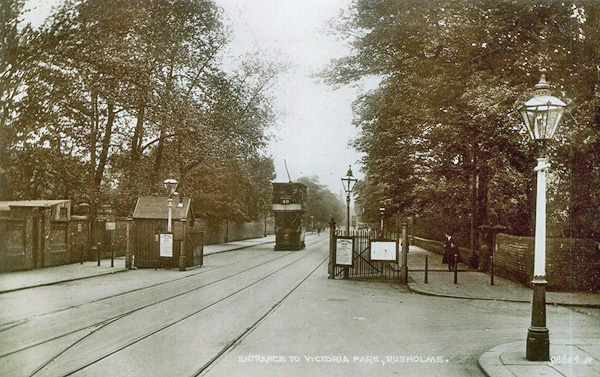 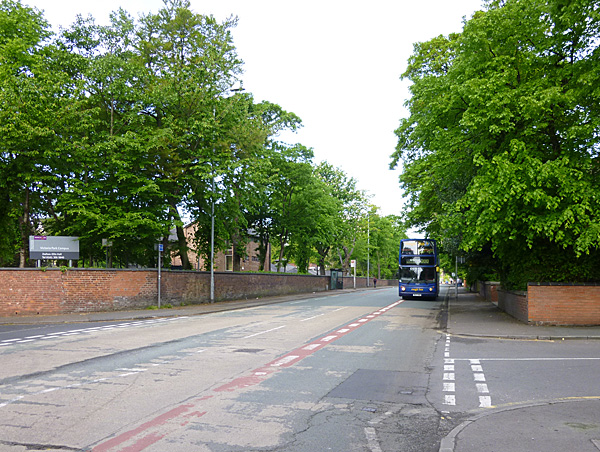 One of the toll gates that I remember, and it must be one of my earliest memories because it must go back to the early 50s, was at the point where Daisy Bank Road joins Plymouth Grove (see below) 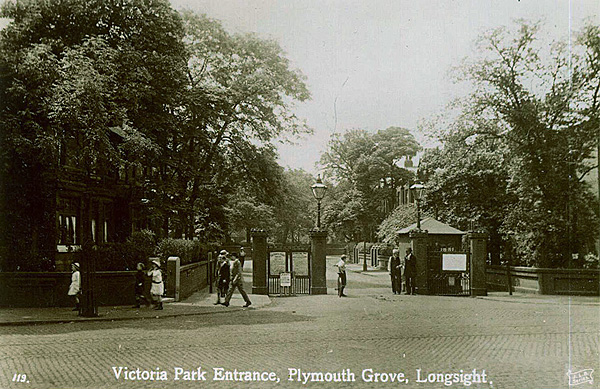 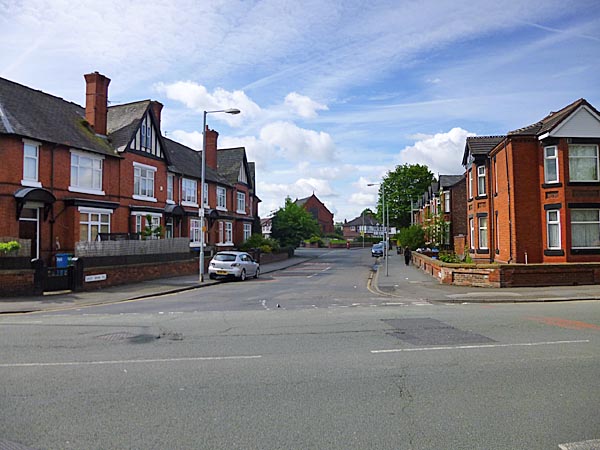
I remember going
here with my mother to pick up ration books and I
believe we went to the basement of the church at the
end of the street. 
There is a story about the toll gate on Plymouth Grove that involves the elephant Maharajah. Belle Vue purchased Maharajah in Edinburgh but he refused to be transported to Manchester so his handler had to walk him all the way. Almost there, they were halted at a toll booth in Victoria Park and an argument broke out between the toll booth operator and the elephant's handler over the appropriate toll for an elephant. Maharajah ended the argument by taking the toll bar and leaving with it. |